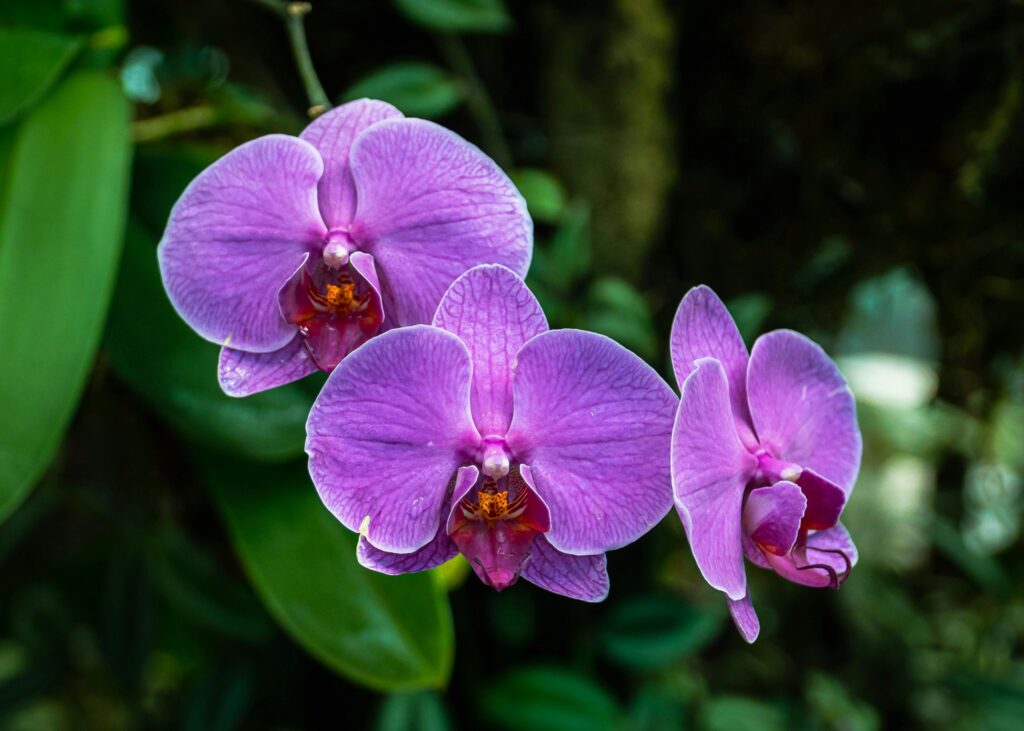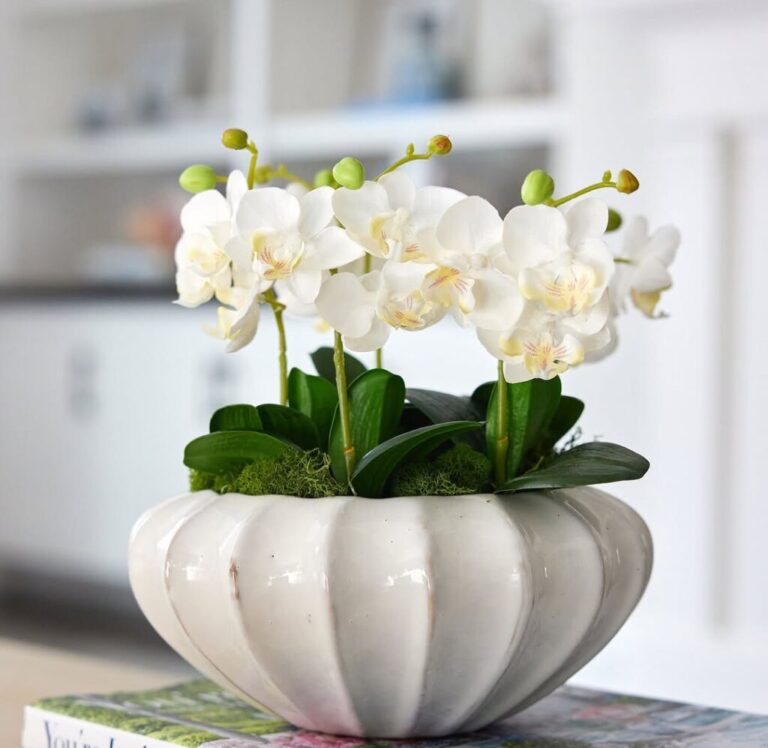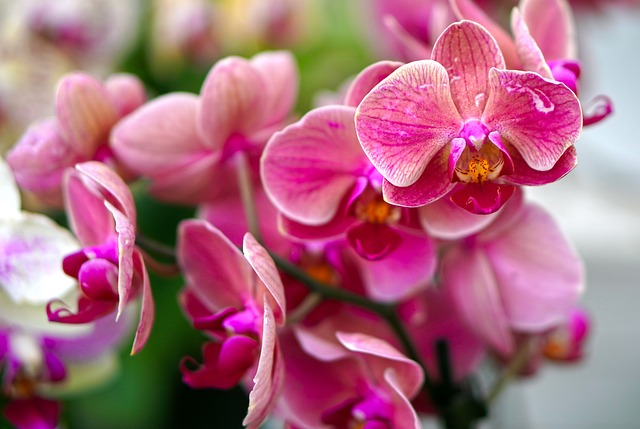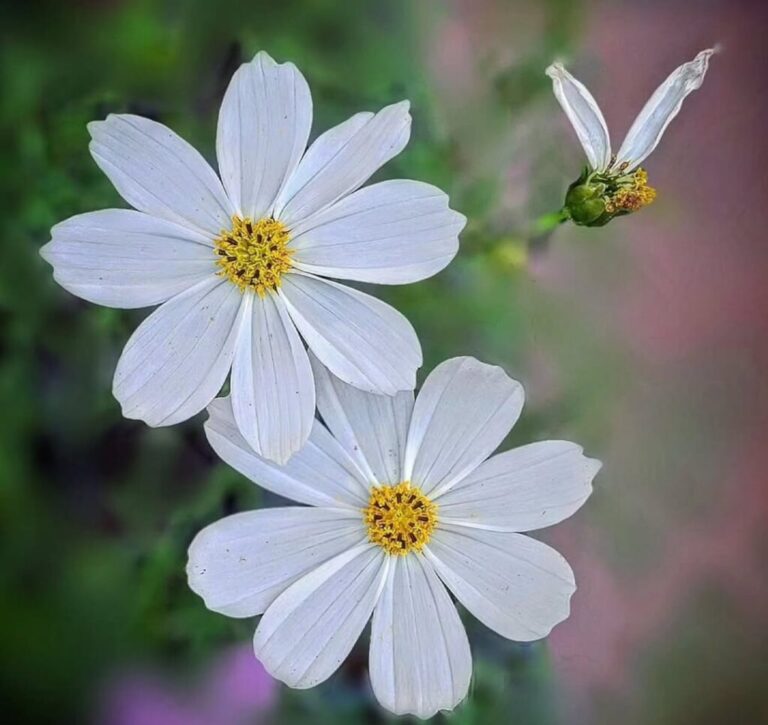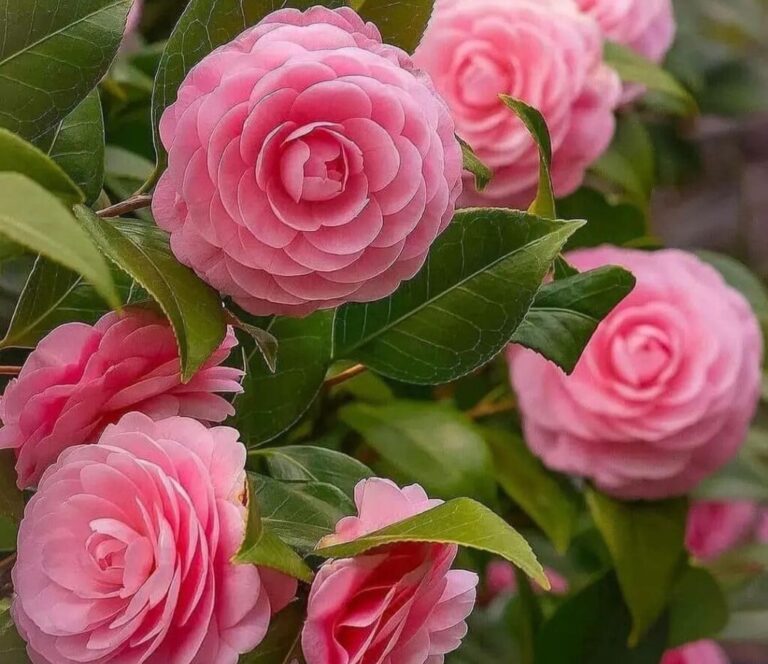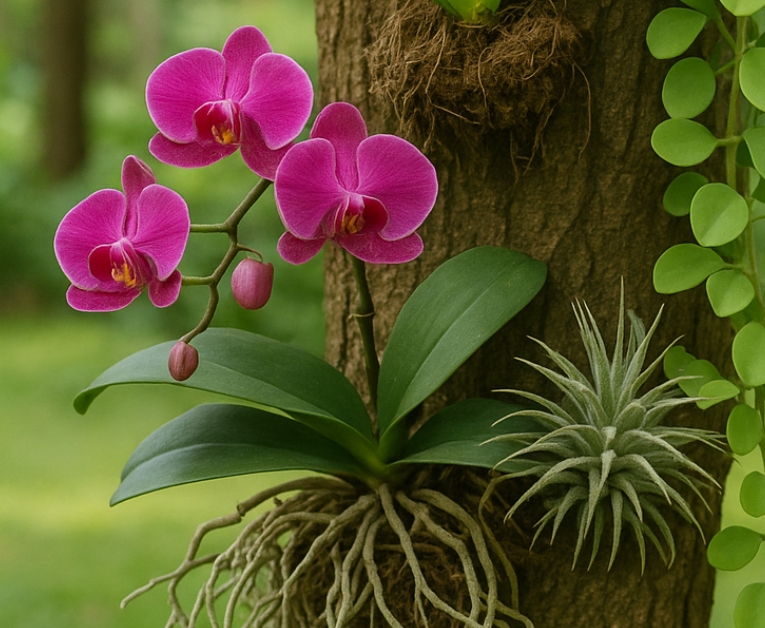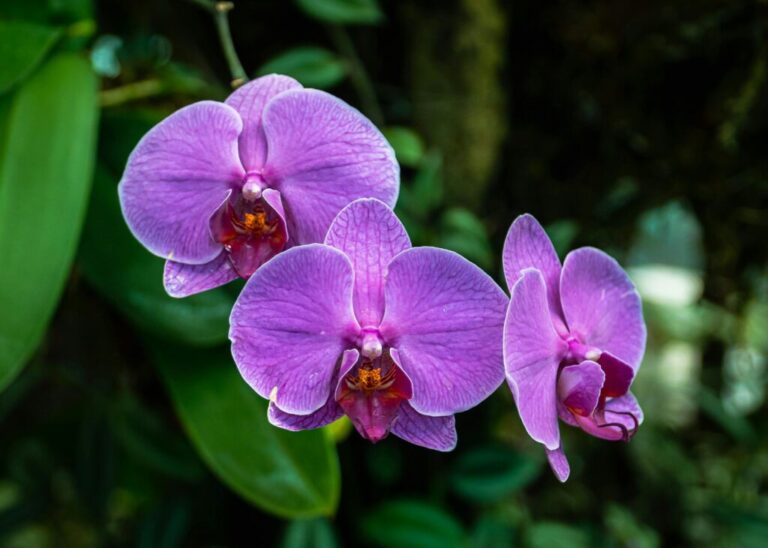Orchids are often seen as exotic and difficult to grow, but one variety breaks that myth with elegance and ease. Moth Orchids, also known as Phalaenopsis, are the perfect introduction to orchid care for beginners and a joyful addition to any expert’s collection. These beautiful houseplants bloom for months and can rebloom every year with the right attention.
What makes Moth Orchids special is their ability to adapt to indoor environments, thriving with just a few basic care routines. However, while they’re easygoing compared to other orchids, they still have specific needs that must be met to stay healthy and produce vibrant, long-lasting blooms. Small mistakes—like overwatering, placing them in harsh sunlight, or using the wrong soil—can quickly lead to root rot, leaf drop, or failed flowering.
That’s why knowing exactly what to do and what not to do becomes essential. Whether you’re just starting out or trying to revive an orchid that’s struggling, understanding these essential care steps is the key to success. In this post, we’ll cover 20 expert dos and don’ts to help you grow Moth Orchids the right way—keeping them healthy, happy, and blooming season after season.
- 1 ✅ 20 Expert Dos and Don’ts to Grow Moth Orchids Right
- 2 1. ✅ Do Use Well-Draining Orchid Mix
- 3 2. ❌ Don’t Use Regular Potting Soil
- 4 3. ✅ Do Provide Indirect Bright Light
- 5 4. ❌ Don’t Expose to Direct Sunlight
- 6 5. ✅ Do Water When Roots Turn Silvery Gray
- 7 6. ❌ Don’t Stick to a Fixed Watering Schedule
- 8 7. ✅ Do Use a Clear Pot with Drainage
- 9 8. ❌ Don’t Let Water Pool in the Crown
- 10 9. ✅ Do Fertilize Monthly with Orchid Fertilizer
- 11 10. ❌ Don’t Overfertilize or Use Garden Fertilizer
- 12 11. ✅ Do Repot Every 1–2 Years
- 13 12. ❌ Don’t Repot During Active Blooming
- 14 13. ✅ Do Trim Flower Spikes After Blooming
- 15 14. ❌ Avoid forcing or yanking spikes off.
- 16 15. ✅ Do Maintain Humidity Around 50–60%
- 17 16. ❌ Don’t Mist Excessively
- 18 17. ✅ Do Watch for Root Health Regularly
- 19 18. ❌ Don’t Ignore Leaf Discoloration
- 20 19. ✅ Do Encourage Air Circulation
- 21 20. ❌ Don’t Keep in a Closed Terrarium or Airless Room
- 22 FAQS
✅ 20 Expert Dos and Don’ts to Grow Moth Orchids Right

1. ✅ Do Use Well-Draining Orchid Mix
Moth Orchids thrive in airy, well-draining growing media. A mix of bark, charcoal, and perlite allows oxygen to reach the roots and prevents rot. Using specialty orchid mix keeps the roots healthy and promotes strong growth. Always avoid compact or dense media, as these can suffocate roots and damage your orchid over time.
2. ❌ Don’t Use Regular Potting Soil
Never plant Moth Orchids in regular garden soil or standard potting mix. These types of soil retain far too much moisture and lack the airflow that orchid roots require. Dense soil causes root suffocation, leading to rot and disease. Always opt for a proper orchid potting mix to support your orchid’s health and blooming cycle.
3. ✅ Do Provide Indirect Bright Light
Moth Orchids love bright but indirect light, such as the soft morning sun from an east-facing window. Proper light encourages flowering and keeps the leaves healthy. Sheer curtains are another way to disperse sunlight.The right lighting helps your Moth Orchid photosynthesize efficiently and bloom several times a year with vibrant, healthy flowers.
4. ❌ Don’t Expose to Direct Sunlight
Direct sunlight can severely damage your Moth Orchid. Harsh afternoon rays will scorch the tender leaves, leaving unsightly burn marks and stunting growth. It’s better to use filtered or diffused light, or position your orchid in a shaded spot. Even short periods of direct sun can harm the plant, so monitor sun exposure daily.
5. ✅ Do Water When Roots Turn Silvery Gray
Moth Orchids have special aerial roots that change color based on moisture levels. When the roots turn silvery gray and the pot feels light, it’s the perfect time to water. This simple observation prevents overwatering and ensures the plant only receives water when needed. It’s an easy but powerful technique for every orchid grower.
6. ❌ Don’t Stick to a Fixed Watering Schedule
Avoid watering your Moth Orchid by a set calendar schedule like “once a week.” The plant’s needs vary based on temperature, humidity, and light. Overwatering and root rot are frequently caused by fixed watering. Rather, inspect the potting material and roots prior to watering.This mindful approach helps keep your orchid hydrated and healthy without damage.
7. ✅ Do Use a Clear Pot with Drainage
Using a transparent pot helps you see root color, growth, and moisture level. Clear pots also let light reach the roots, which aids in photosynthesis. Make sure the pot has proper drainage holes to prevent water stagnation. A clear orchid pot is both functional and educational, making orchid care easier for all growers.
8. ❌ Don’t Let Water Pool in the Crown
After watering, always check the center of the leaves—called the crown. Water sitting here can cause crown rot, one of the most common killers of Moth Orchids. Gently tilt the pot to drain water or blot it with tissue. Preventing standing water in the crown helps avoid fungal infections and extends your orchid’s life.
9. ✅ Do Fertilize Monthly with Orchid Fertilizer
Moth Orchids benefit from monthly feeding with a balanced, water-soluble orchid fertilizer like 20-20-20.Monthly feedings of a water-soluble, balanced orchid fertiliser, such as 20-20-20, are beneficial for moth orchids. This gives vital nutrients for root development and blossoming. To prevent overfeeding, always dilute fertiliser to half strength. Consistent fertilization supports year-round vitality and helps the plant recover after blooming or repotting. Your orchid will thank you.
10. ❌ Don’t Overfertilize or Use Garden Fertilizer
Overfeeding can burn roots and damage your orchid’s health. Never use standard garden fertilizer, as it’s too strong for delicate orchid roots. Stick with fertilizers labeled for orchids and always follow directions. Less is more when it comes to feeding Moth Orchids—excess salts from overfertilizing can build up and cause serious issues.
11. ✅ Do Repot Every 1–2 Years
Repotting every 12–24 months keeps your orchid in fresh, breathable media and allows space for new root growth. Old media breaks down and holds excess water, which encourages root rot. Choose a slightly larger pot only if needed. Spring is the best season to repot, especially right after the flowering cycle has ended.
12. ❌ Don’t Repot During Active Blooming
Avoid repotting Moth Orchids when they’re blooming. Moving the plant during flowering can cause bud blast (flowers dropping prematurely) and stress. Wait until the blooms fade and the spike has dried before repotting. Repotting during rest periods allows the orchid to recover quickly and adjust to its new environment without sacrificing its blooms.
13. ✅ Do Trim Flower Spikes After Blooming
After flowers fade, trim the flower spike just above a node to encourage possible reblooming or cut it completely to help the plant rest. Use sterilized scissors to prevent infections. Cutting the spike redirects energy into leaf and root growth, which strengthens your orchid for its next blooming cycle. Timing is important here.
14. ❌ Avoid forcing or yanking spikes off.
Never break off the flower spike by hand. Forcing it can tear tissues and introduce infections. Always use sterile cutting tools and cut just above a node or at the base, depending on your care strategy. This gentle approach keeps the plant healthy and reduces the risk of spreading bacteria or fungi through wounds.
15. ✅ Do Maintain Humidity Around 50–60%
Moth Orchids love moderate humidity. If your indoor air is dry, especially in winter, use a humidity tray, mist occasionally, or group plants together to maintain ideal levels. This helps prevent dehydration and keeps the leaves supple and strong. Healthy humidity levels mimic the orchid’s natural environment and support overall plant resilience and vigor.
16. ❌ Don’t Mist Excessively
Misting may seem helpful, but overdoing it can lead to leaf spots, bacterial infections, and crown rot. Water sitting on leaves, especially in cool or dark environments, creates perfect conditions for fungi. If you must mist, do it in the morning and avoid the crown. Humidity trays and room humidifiers are safer alternatives.
17. ✅ Do Watch for Root Health Regularly
Check your Moth Orchid’s roots monthly.Firm, green or white roots are indicative of good health.Mushy, black, or smelly roots mean trouble. Catching root rot early allows you to trim dead parts and repot in fresh media. Keeping an eye on the roots helps you stay ahead of major problems and ensures long-term orchid success.
18. ❌ Don’t Ignore Leaf Discoloration
Yellow, spotted, or drooping leaves often signal a care issue—usually lighting, watering, or nutrient-related. Don’t assume it’s natural aging without checking conditions. A quick adjustment in care can revive the plant before the issue worsens. Moth Orchids are responsive and can recover quickly when you act early to fix the root cause.
19. ✅ Do Encourage Air Circulation
Proper airflow reduces the chance of mold, fungus, and pest problems. An open window or a tiny fan in the space can be beneficial.Avoid stagnant air, especially in bathrooms or tight corners. Circulating air keeps your Moth Orchid healthy by drying excess moisture and mimicking the gentle breezes of its native habitat.
20. ❌ Don’t Keep in a Closed Terrarium or Airless Room
Moth Orchids dislike sealed or unventilated environments. Poor air quality invites mold and disease. Avoid terrariums without airflow or tight, humid spots with no circulation. Fresh air is as important as water and light. Give your orchid space to breathe, and it will reward you with longer blooms and stronger, healthier leaves.
🌿 Final Thoughts
Growing Moth Orchids doesn’t have to be complicated. When you follow these 20 dos and don’ts, your orchid care becomes intuitive and rewarding. By observing your plant and responding to its needs, you’ll enjoy vibrant blooms and healthy growth throughout the year. Start small, stay consistent, and soon your Moth Orchid will thrive like a pro’s!
FAQS
What are Moth Orchids and why are they popular?
The scientific name for this kind of orchid is Phalaenopsis, or moth orchid. These lovely floral plants are well-liked for their easy maintenance and long-lasting blooms. Moth orchids grow nicely indoors and are ideal for novices. When given the right care, moth orchids can bloom all year round, making them a popular choice for both novices and experts.
2. How often should I water Moth Orchid ?
In between waterings, moth orchid tend to become a little dry.Water your Moth Orchids about once a week, depending on humidity and potting media. Always avoid overwatering, which can lead to root rot. A simple way to test if Moth Orchid need water is by inserting your finger an inch into the soil—if dry, it’s time to water.
3. Do Moth Orchid need direct sunlight?
No, Moth Orchids thrive best in bright, indirect light. Direct sunlight can scorch their leaves. Place Moth Orchid near an east or north-facing window for optimal light. If you’re using artificial lighting, make sure it’s not too intense. Moth Orchid will produce healthy foliage and blooms under soft, filtered light conditions.
4. How do I get Moth Orchid to rebloom?
To encourage Moth Orchid to rebloom, ensure they receive the right balance of light, humidity, and a slight drop in nighttime temperatures. Trim the flower spike above a node once the blossoms have fallen. With proper care, Moth Orchid often produce secondary spikes and bloom again in a few months, bringing renewed beauty.
5.What range of temperatures is best for moth orchid?
Moth Orchid prefer temperatures between 65°F to 80°F (18°C to 27°C) during the day, and slightly cooler at night. Avoid exposing Moth Orchids to temperatures below 55°F (13°C) or sudden drafts. Stable, warm environments help Moth Orchid grow well and rebloom regularly, especially in indoor conditions.
6.Which type of potting medium is ideal for orchid moths?
Moth orchids prefer a potting mix that drains well, such as sphagnum moss, orchid bark, or a combination of the two. Regular potting soil contains too much moisture, so never use it. In addition to ensuring that the roots receive enough moisture and air circulation, a breathable mix helps prevent root rot in moth orchids.
7. How long do Moth Orchid bloom?
Moth Orchid typically bloom for 6 to 10 weeks, though some can last longer with proper care. After the blooming period, Moth Orchid enter a resting phase before potentially blooming again. Maintaining the right environment can extend the flowering period and even promote more frequent blooming cycles.
8. Can I grow Moth Orchid in water?
Yes, water culture is possible for Moth Orchid, but it requires specific care. In full water culture, roots are submerged part-time After soaking for a few days, roots in semi-water culture dry out.However, traditional bark or moss media remains easier for beginners growing Moth Orchid indoors.
9. Why are the leaves on my Moth Orchid turning yellow?
Yellow leaves on Moth Orchid could be caused by overwatering, poor lighting, or old age. If only one leaf is yellowing at the bottom, it may be natural. But if multiple leaves are affected, check for root health and adjust watering.The leaves of healthy moth orchids will be robust and green.
10. How often should I fertilize Moth Orchid ?
Fertilize Moth Orchid every two weeks during active growth using a balanced, water-soluble orchid fertilizer. During the rest period, you can reduce feeding to once a month. Always dilute the fertilizer to half strength. Over-fertilization can damage roots, so it’s better to underfeed Moth Orchid than overfeed them.
11. Are Moth Orchid safe for pets?
Moth Orchids are non-toxic to cats and dogs, making them safe for homes with pets. However, it’s still wise to prevent pets from chewing on Moth Orchid, as ingestion of potting media or large amounts of plant material could cause stomach upset. Always keep Moth Orchid out of reach if possible.
12. How can I tell if my Moth Orchid are healthy?
Healthy Moth Orchid have firm, green leaves and white to green, plump roots. Droopy leaves, shriveled roots, or blackened areas may indicate poor health. Regularly inspect your Moth Orchid for pests, fungal issues, or root rot. With good care, Moth Orchid stay healthy and bloom reliably throughout the year.
13. Should I repot Moth Orchid after purchase?
Yes, it’s often a good idea to repot Moth Orchids after purchase.A lot of moth orchids that are purchased from stores are on densely packed moss that holds excessive amounts of moisture. Repot into orchid bark after blooms fade. This helps Moth Orchid adjust better and reduces the chance of root rot or fungal issues.
14. What pests affect Moth Orchid and how do I treat them?
Common pests like mealybugs, scale, spider mites, and aphids can attack Moth Orchids. Regularly inspect the leaves and undersides.Use neem oil or a moist towel to remove bugs. For severe infestations, insecticidal soap or a systemic pesticide may be necessary to protect your Moth Orchids long term.
15. How do I prune Moth Orchid properly?
After blooming, prune Moth Orchid by cutting the spike just above a node if it’s still green. Perhaps a subsequent bloom will result from this.If the spike turns brown, trim it at the base. Always use sterilized scissors. Proper pruning helps Moth Orchids conserve energy and encourages future flower production.
